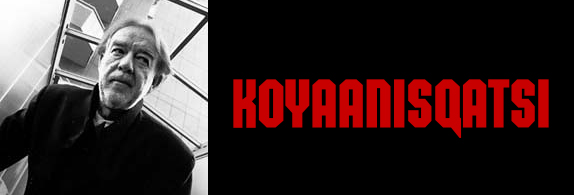PARCC Testing: Corporate Persons vs Teaching Persons

Halfway through taking the practice test produced by PARCC (Partnership for Assessment of Readiness for College and Careers) I realized I might not be able to pass the 11th grade reading portion. The multiple choice answers on the test were very like the options a human being might be given by a machine. Designed like semantic puzzles, virtually indecipherable and charged with the anxiety of potential failure, the practice test and its multiple choice answers seemed purposefully confusing. Taking the test felt sort of like playing chess with a supercomputer on a time clock.
The multiple choice questions were about very interesting reading assignments—a piece of fiction called Quicksand by Nelia Larsen, excerpts from the Declaration of Independence, portions of The Autobiography of an Ex-Colored Man by James Weldon Johnson, and paragraphs from a Speech to the Second Virginia Convention, by Patrick Henry. But while the 11th grade reading comprehension test is not about discerning fact from falsehood, it was presented as if there are clearly answers that are more true than others. The questions are not objective but interpretative which means subjective. The list of potential answers read like the potential interpretations of a committee, or worse, of a computer program. It’s the subjectivity of something that is not a person, not a reader, but a bureaucratic and technologic entity. Try it for yourself.
I might have failed the test because my subjectivity and that of a machine’s or a committee’s are not of the same order. The New Mexico students and their parents who have boycotted and protested the PARCC tests must have had the same realization. The answers require a reader to conform to a way of interpreting the reading, a way that is not at all clear in the first place and inherently objectionable as a demand of forced conformity.
Here’s a sample: “In paragraph 2, what does the phrase inherent aloneness suggest about Helga?” The multiple choice is: A. She dislikes the company of others. B. She is uncomfortable interacting with others. C. She feels that other people are judging her. D. She is uncomfortable being alone.” If tests are supposed to be teaching tools as well as a instruments of judgment, do you find this enlightening?
The right answer, whatever that might be, is portrayed as correct, “objective” and true when it is, in itself, an interpretation. In other venues, foisting off interpretations as truths is called propaganda. In traditional classroom settings bad teachers do exactly the same thing—portray their reading of a work of literature as the “right” reading (not as another option) and thereby denigrating the subjectivity of student readers. It’s the way bad teachers have ruined literature, especially poetry, for students who have perfectly legitimate interpretations of their own.
PARCC has just become the subject of a legal struggle between two of its potential distributors, Pearson, the mammoth British multinational corporation and American Institute for Research, an equally formidable non-profit social science research organization.
Whoever wins this dispute, the PARCC tests will remain the same I’m sure. It’s quite possible that corporate testing companies are inherently unsuited to creating sane and meaningful tests that are not a variation of corporate conformism. But what’s really at issue here is that multiple choice testing has no place in the interpretation of literature or of public documents, like the Declaration of Independence, that can serve as literature. Multiple choice is purposely confused with the full spectrum of possible meanings, the student’s included. It is a limited and contrived set of options that exclude all other options.
Because evaluations of a teacher’s proficiency and of her school’s effectiveness are attached to student achievement on these tests, the teacher ends up being a testing coach with which a student has a purely functional relationship, learning from the teacher how to read the interpretations of the testers and intuiting, perhaps, the “correct” answer. The intellectual relationship between student and teacher, which in many situations is one of reciprocal inspiration, is replaced with a version of apprenticeship whereby the students learn the tricks of the trade of taking tests and little else.
The PARCC tests, and others like them, are invented by people who know nothing about classroom teaching, rather like computer writing programs created by program engineers who aren’t writers. If education is not to be propaganda and indoctrination, young readers must be validated in expressing, as articulately as they can, their own interpretations of a text and not be rewarded for puzzling out the wordplay of testing bureaucrats in massive corporations.
Arson at the Rio Grande Sun

I wish I could bring myself not to mince words here. I’d like to say that some moron, some drooling lout, some enraged imbecile, some bully with the brains of a golf ball tried to set fire to the offices of the venerable Rio Grande Sun in Espanola last week, but I feel constrained by protocols, decorum, and a love for the full story.
So I’ll restrain myself for the moment. But, indeed, someone did try to burn the Sun down and was caught on a surveillance camera doing it.
As of this writing, the arsonist has not yet been identified. He apparently broke the Sun’s front door window and poured gasoline in and lit it. It pretty much scorched one front room and then went out by itself.
Robert B. Trapp, managing editor and owner of the Sun, brushed the whole thing off. Quoted in a fine piece by Robert Nott in the New Mexican, Trapp said fire was “nothing.” There’s a lot of “people mad at us for a lot of stuff for a long period of time.” “I gotta clean up, get a new copier. We gotta move forward.”
An excellent award winning documentary on the Rio Grande Sun by filmmaker and physician Ben Daitz was produced in 2012. Bob Trapp’s mother and father, Robert and Ruth, began the Sun in l956 as a daily paper then changed it to a weekly in 2001.
It’s been scrupulously covering the local scene ever since, including the land grant wars in Northern New Mexico in the l960s, and everything in between and after.
With a run of some 10,000 papers a week and a distribution all over the northern part of New Mexico and much of southern Colorado, the Sun practices local journalism as a calling. It does it the right way, holding governments and school boards accountable, ferretting out embezzlers and other miscreants, covering the local world with integrity and empathy, training legions of young reporters how to dive deep into stories, get the facts right and fast, and not pull their punches. One wishes that every small town and big town in the country had a journalistic watchdog as aggressive, fair-minded and thorough as the Sun.
Anyone who’s worked in local journalism has probably experienced various forms of hate mail, long term slanderous grudges, and vandalism designed to frighten and ward off. Back windows in cars get smashed in, like mine did once or twice, or BB gun pellets are shot through back door windows, like happened to me, but no heavy duty guns, thank heavens, and no arson either so far. Rude folks come to lunch tables to intimidate and bawl you out but then back off when you scrap your chair on the floor and rise up to get in their faces. I like to think the bullies are angry because we’re doing our jobs the way they’re supposed to be done as best we can, as opposed to us being moronic louts and bullies ourselves, as we’re often accused of being.
One thing we know for sure—arson, vandalism, and anonymous hate mail are all cowardly acts by nameless people, directed at others who write what they consider to be verifiably true, who honorably work to fulfill the public’s trust, and who put their names on everything they do—like Bob Trapp and his writers, and the whole staff of the Rio Grande Sun. They’re stand up folks. And, as their readers, we admire them greatly.
Why We Love New Mexico: Godfrey Reggio

The first time I saw New Mexico filmmaker Godfrey Reggio’s experimental documentary Koyaanisqatsi in l983 I thought to myself that I’d finally seen a work of art arising from my own era and my own world that could truly be called a prophetic masterpiece.
I was not alone in my assessment. Koyaanisqatsi, a Hopi Pueblo word meaning “life out of balance,” won the 1983 Los Angeles Film Critics Association Award for its magnificent musical score composed by Philip Glass. It won the Sao Paulo International Film Festival audience award for best feature in l984, and the audience award for best film at the Warsaw International Film Festival in l988, and many more.
Koyaanisqatsi is the first in a group of films called the Qatsi Trilogy. Qatsi is the Hopi word for “life.” The second film, released in l988, is Powaqqatsi which means, in Hopi, “life in transition.” And the third, released in 2002, Naqoyqatsi, means “life as war.”
One of the reasons that we love New Mexico is that a former Christian Brother from New Orleans who came to Santa Fe in the 1960s, worked with street gangs, co-founded an organization called Regional Education to focus on media development, art, community development and research , who cofounded La Clinica de la Gente, who organized a stunning media campaign about the invasion of privacy and the use of technology to manipulate behavior and “manufacture consent,” that this former monk and social activist learned a cinematic medium here with such profound dexterity and prophetic vision that he created a truly life-changing film experience in the Qatsi trilogy. In these movies, the human world becomes a stream of consciousness, with endless images and time-lapse sequencing set to Philip Glass’s organic and cosmic sounds. Humanity is shrunk by technology into a blur and a flow, a power charge made up of invisible particles with inner realities as irrelevant to technology as towns and creatures are to tornados, or living things are to the forces of time.
The film’s official website says that Koyaanisqatsi “attempts to reveal the beauty of the beast!...If one lives in this world, the globalized world of high technology, all one can see is one layer of commodity piled upon another. In our world the “original is the proliferation of the standardized. Copies are copies of copies.”
The last film in the trilogy, Naqoyqatsi, life as war, reveals a “new” nature, the “nature of technology,” which Reggio considers the “most significant event of the past five thousand years.” The “power of technological homogenization” creates a “wonderland” that is actually a “sanctioned aggression against … the force of life itself,” the real under constant attack by the virtual, a world in which nature is replaced by the dominance of “technology as a way of life.”
The Qatsi Trilogy gives tangibility to the dread of many that humankind, choice by choice, is building a world in which it can no longer survive, not only as individual human beings, but also as animals whose vanishing habitat is the world. Starting over 30 years ago Reggio’s films saw first glimpses of the great tsunami of the virtual world and Big Data swelling under the oceans of unconsciousness. He recognized technology and its waste products were starting, even then, to change the world as we knew it, change it into a mere platform for human industry and consumer society.
Reggio’s films are not only works of prophetic art, they are works of conscience, never presuming to preach, but always willing to show, to demonstrate, to reveal, to create experience that gets to the root conflict of the modern and postmodern world—the war between our ingenuity as a technologically advanced species and the world it preys upon, cannibalizes, and devours to keep itself energized, if not quite alive.
(Test photo from Ryan McGilchrist / CC; Godfrey Reggio by Erling Mandelmann / CC)




Responses to “Provincial Matters, 3-16-2015”